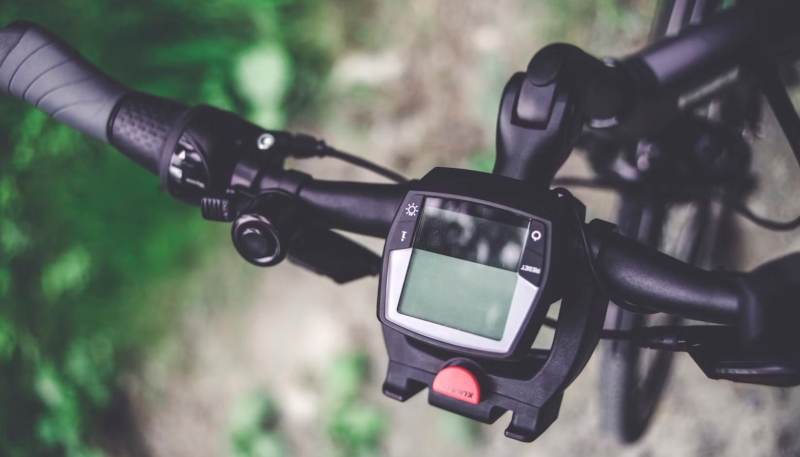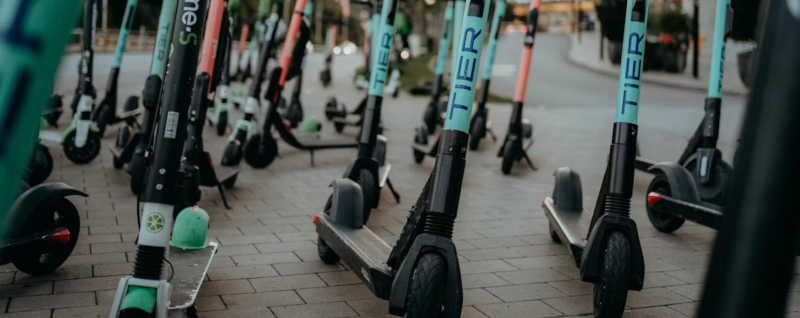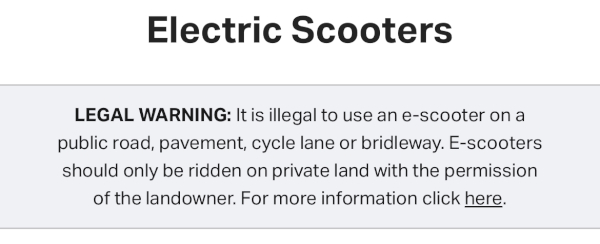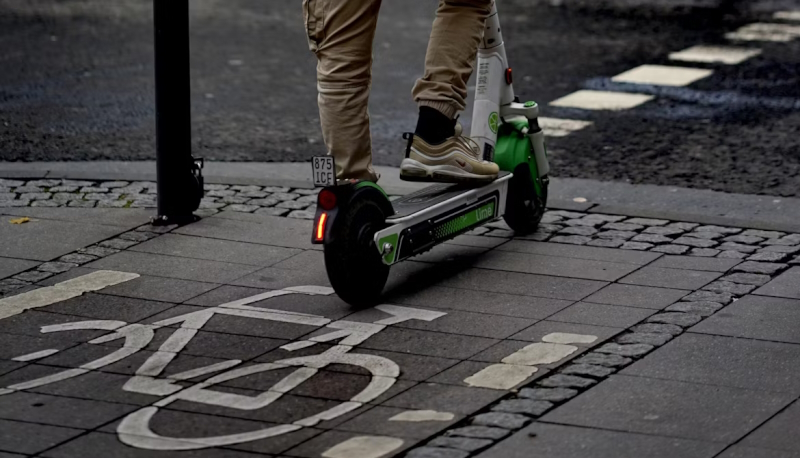Have you tried out or do you own an e-Bike or e-Scooter?
The streets of some parts of Scotland have been transformed by the surge in popularity of e-bikes and e-scooters.
While these devices offer a convenient and often eco-friendly mode of transport, their rapid adoption has created a complex legal landscape for those involved in accidents.
Misinformation about the legal position of riders is widespread and this article aims to clarify the current legal position in Scotland for potential victims of accidents involving e-bikes, e-scooters, and their variants.
We will include a discussion of the factors affecting the viability of a personal injury claim where one of these vehicles is involved.
Understanding the legal standing of the vehicle involved is the first crucial step in assessing the viability of a claim. The law differentiates significantly between various types of electrically powered personal transport.
The Different Classes of Electric Personal Transport.
1. Electrically Assisted Pedal Cycles (EAPCs) – i.e. “Legal” E-Bikes.

The law concerning EAPCs is, in fact, quite straightforward.
These are essentially normal pedal bikes equipped with a small, integrated electric motor that assists propulsion.
EAPCs offer advantages such as enabling faster and longer travel without expending as much energy, making cycling accessible to a wider demographic, including the elderly or disabled.
Unlike mopeds or motorcycles, EAPCs do not require driving licences, insurance or registration. They can be ridden on roads and active travel routes, just like regular bicycles. Really, they are best thought of as “enhanced bicycles”.
For an e-bike to be legally classified as an EAPC, it must meet specific criteria, largely consistent since 1983 and updated in 2015:
- Pedals for Propulsion: It must have pedals that propel it.
- Motor Speed Limit: The motor must cut out when the speed reaches 15.5 miles per hour (25 km/h). The rider can go faster, but only by pedalling or relying on gravity.
- Power Limit: The motor’s continuous rated power output must not exceed 250 watts.
- No Throttle (generally): For the most part, EAPCs cannot have a throttle, though the Driver and Vehicle Standards Agency (DVSA) can type-approve specific bikes with exceptions.
- Rider Age: The rider must be at least 14 years old.
If an e-bike meets these criteria, it is treated as a normal bicycle for legal purposes.
In the event of an accident, say, to a pedestrian, any claim for injuries would be brought directly against the rider, similar to an accident involving a regular bicycle. There is no mandatory insurance for EAPCs, meaning that your ability to recover compensation depends on the rider’s personal means or any voluntary insurance they might hold.

2. Non-Compliant E-Bikes – (i.e. “Illegal” E-Bikes (often motorcycles in disguise)).
The real challenge with e-bikes often arises from those that do not meet the EAPC regulations.
Over the last five to ten years, many individuals have either modified existing bikes or purchased cheap, imported models that, despite having pedals, are effectively electric motorcycles.
These non-compliant e-bikes frequently feature motors that are too powerful, allowing them to exceed the 15.5 mph speed limit, and they can often appear somewhat “cobbled together”.
Some can be extremely powerful (2,000-watt motors have been reported!).
Riders choose such contraptions for the “benefit” of having a motorcycle without the associated costs and hassles of insurance, a driving licence and registration.
However, these vehicles pose significant risks due to their higher speed and power, increasing the potential for serious injury to both the rider and others.
Furthermore, their often cheap or modified construction can lead to quality issues, with reports of bikes falling apart or batteries catching fire.
Legally, these non-compliant e-bikes are not bicycles; they are classified as generic motor vehicles and are, effectively, uninsured motorbikes.
3. Personal Light Electric Vehicles (PLEVs) and E-Scooters – The Regulatory Minefield.

This category covers a wide array of small, powered transport devices, including stand-up electric scooters, hoverboards, electric skateboards, Segways, and even electric unicycles.
Prior to 2020, there were no specific statutory provisions for these vehicles, meaning they fell under the broad remit of the Road Traffic Act 1988. Reported decisions from the Courts, primarily from criminal prosecutions in England, established that these devices are considered to be “motor vehicles intended or adapted for use on the road”.
The critical implication of this classification is that privately-owned e-scooters and similar PLEVs, when used on public roads, pavements, or bridleways, legally require registration, a driving licence, and third-party insurance, just like any other motor vehicle.
Since they typically cannot meet these requirements (and it’s almost impossible to get them insured or plated), their use on public land is largely illegal.
Furthermore, because they are motor vehicles, they are also prohibited from being driven on pavements.
This leaves privately-owned e-scooters in a peculiar legal limbo: they cannot be ridden on roads or pavements, only on private land with the owner’s permission.
Retailers, while selling these devices readily, often include disclaimers stating their illegal status for public use.

Rental E-Scooters: A Temporary Exception.
In response to the COVID-19 pandemic, the UK Government introduced a pilot scheme in June 2020 to test the viability of e-scooter rental services.
This scheme temporarily legalised rental e-scooters for use on carriageways and cycle lanes in designated areas, treating them similarly to electric bikes.
Key conditions for rental e-scooter use include:
- Driving Licence: Riders must hold a full or provisional driving licence, meaning they must be 16 or over.
- Mandatory Insurance: Third-party insurance is compulsory and is “baked into” the rental cost.
- No Mandatory Helmet: Unlike the technical requirement for privately-owned scooters (which count as motorcycles), helmets are not mandatory for rental e-scooters.
This pilot scheme has been repeatedly extended and is now widespread, particularly in major cities, giving it the appearance of having permanent status. The rental model helps overcome regulatory hurdles by integrating insurance and requiring licence checks via rental apps.

Factors affecting the viability of a personal injury claim where one of these vehicles is involved.
If you are a victim of an accident involving one of these vehicles, several factors will influence the chances of success of your claim:
1. The illegality of your actions as the rider involved (and why it might not matter as much as you would expect).
A common defence argument is ex turpi causa non oritur actio – which means that a claimant should not benefit from compensation if, at the time of the accident, they were pursuing a criminal enterprise.
The argument is that if an e-scooter or non-compliant-e-bike rider is involved in an accident, they are often committing a regulatory offence, such as using a motor vehicle without insurance, or without a licence or registration.
However, riding illegally (e.g., without insurance) generally does NOT automatically bar a claim for personal injuries.
While regulatory offences exist, the legal position is that the lack of insurance or an appropriate licence is often considered part of the “regulatory background” to an accident, rather than its direct cause.
Courts have previously held that criminal acts like careless driving, speeding, or driving without an MOT do not prevent a claimant from recovering damages.
Insurers defending claims for e-scooter accidents often choose not to insist on illegality defences because they anticipate losing if the matter goes to court, preferring to settle. This applies predominantly to claims for personal injury. However, a claim for damage to the illegal vehicle itself might be treated differently, as insurers could argue against replacing an item that will likely be used illegally again.
2. Liability and Contributory Negligence
The Highway Code applies to e-scooter riders, in a similar way to pedal cyclists, meaning that rules regarding visibility, manoeuvring and lights, for example, are relevant. However, the behaviour of the rider can significantly impact the outcome of a claim.
You could be found contributorily negligent just for riding a dangerous or overpowered e-scooter.
While merely riding a legal rental e-scooter is unlikely to result in a finding of contributory negligence, the specific characteristics of the device can be critical.
If a rider is on a particularly powerful or obviously dangerous contraption, the opponent might argue that by simply riding such a “death trap,” the rider has already surpassed the threshold for contributory negligence. In general, contributory negligence arguments are a more likely and successful path for third party insurers in these types of cases compared to illegality defences.
The difficulties can be compounded via observations that e-scooter riders, particularly younger males, are sometimes perceived as riding in an “anti-social” or “negligent” manner, potentially making them less credible witnesses.
The importance of wearing a helmet – relative to contributory negligence arguments – in some situations.
Although helmets are not legally mandatory for rental e-scooters or conventional bicycles in the UK, reported decisions from the courts indicate that in the event of a head injury, findings of contributory negligence can be made if a helmet was not worn and would have prevented or reduced the injury.
Maxillofacial or dental injuries are common in e-scooter accidents, highlighting the benefit of face-protecting helmets. While there’s no specific case law on rental e-scooters, it is anticipated that similar deductions for contributory negligence would apply as in cycle accidents.
3. Insurance – The Key to Compensation
The availability of insurance is arguably the most crucial factor determining the ease and likely success of a claim.
- Legal EAPCs: As these are treated as bicycles, there is no mandatory insurance. Any claim for compensation would be brought directly against the rider, and their ability to pay any compensation agreed or awarded by a court would depend on their personal assets or any voluntary insurance they might hold.
- Rental E-Scooters: The pilot scheme mandates third-party insurance, which is included in the rental cost. In such cases, a claim can be pursued against the negligent rider (whose details should be obtainable from the rental company) and/or their insurer.
Victims of accidents involving privately-owned, uninsured e-scooters or non-compliant (illegal) e-bikes can claim compensation through the Motor Insurers’ Bureau (MIB).
This is a vital, yet often unknown, safety net. for injured victims of accidents.
Privately-owned e-scooters and non-compliant e-bikes are legally classified as “motor vehicles” under the Road Traffic Act.
As such, they ought to be insured.
If they are not (which is almost always the case for privately-owned devices used on public roads), the MIB acts as the “insurer of last resort” under the Uninsured Drivers’ Agreement.
This means that, if you are injured by a rider of an uninsured privately-owned e-scooter or illegal e-bike, the MIB is liable to compensate you, provided the accident arose out of the use of the vehicle.
The MIB is not pleased with this responsibility and is lobbying for legal reform but, for the foreseeable future, this avenue for compensation remains open.
4. Possible “intimidation tactics” against you as the injured person.
If you, as a potential claimant, were riding your own (illegal) e-scooter when hit, your opponent might try to scare you off making a claim by threatening to report you to the authorities for criminal offences (e.g. DVLA or Police Scotland).
In theory, you could be incriminating yourself by making a civil claim where you were arguably committing a criminal offence yourself.
While there is certainly this possible “self-incrimination” risk, in practice, the best advice is to hold your nerve in the face of intimidation and keep right on with your claim.
Summary
- Vehicle Classification is Key: The legal status of the e-bike or e-scooter involved fundamentally determines the path of a claim. Legal EAPCs are treated as bicycles, while privately-owned e-scooters and non-compliant e-bikes are motor vehicles. Rental e-scooters in the UK exist under a specific pilot scheme.
- “Illegality” will probably not bar your injury claim: Despite what you might expect, you riding an illegal e-scooter or non-compliant e-bike at the time of an accident does not automatically prevent you from claiming compensation for your personal injuries if another party was negligent in causing the accident.
- The MIB provides a crucial safety net: For accidents involving uninsured, privately-owned e-scooters or non-compliant e-bikes, the Motor Insurers’ Bureau (MIB) is likely to be liable for compensation under the Uninsured Drivers’ Agreement, providing a vital avenue for victims.
- Contributory Negligence might apply and reduce your compensation: Findings of contributory negligence are likely to be more common accidents where the injured claimant was riding an e-scooter, due to factors like the use of overpowered devices, perceived anti-social riding, and the absence of a helmet (even if a helmet was not legally required). This can significantly reduce the amount of compensation received.
- The benefit of obtaining Expert Legal Advice: The legal position surrounding these accidents is complex and often misunderstood. Regardless of the perceived legality of the vehicle you or the other party were riding, it is crucial to get prompt legal advice from a solicitor experienced in “road traffic” claims to understand your rights and the viability of pursuing compensation.
The current legal framework for e-scooter accidents is a bit messy, with little sign of any law reform on the horizon.
This makes navigating the aftermath of an accident involving these vehicles challenging but, as discussed, avenues for compensation do exist.
How we can help
If you have any questions about matters raised in this article or if you would like to enquire about any aspect of our personal injury claims services, feel free to get in touch with us. We would be glad to hear from you.
All enquiries are free of charge and without obligation.
If we are not able to help you ourselves, we will probably know someone else who can and give you a steer in their direction.
You can contact us on 01343 544077 or by completing and submitting to us a Free Online Enquiry.